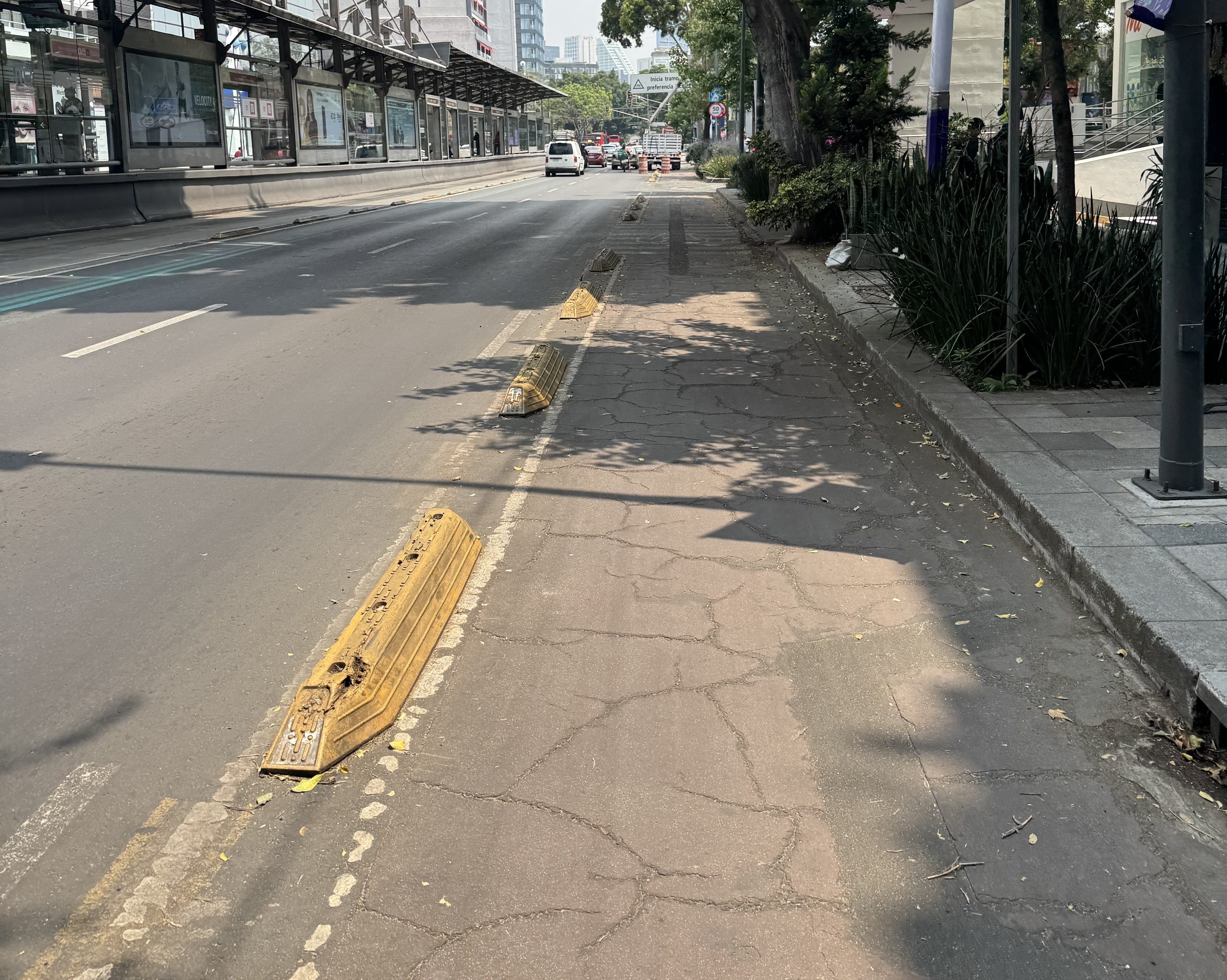This article is my guide to Biking Etiquette in Mexico City, the largest city in North America. I’ll share all my tips to help you get around in a safe, efficient, and fun way, and beat tons of traffic! The traffic here is ridiculous, but the weather is beautiful for most of the year, except during the rainy season in the summer. So, especially if you are trying to get to Polanco from anywhere else, learning how to bike in CDMX will open up a whole new way of life for you.
I’ve biked 1,500+ km (950 miles) in Mexico City, where I've lived for the last three and a half years. Here’s a screenshot of the statistics from my Ecobici app as of August 2025! Riding bikes is my favorite way to get around and one of the best things about living in Ciudad de México. While I’ve not yet been in a biking accident in CDMX, I have been in two small biking accidents before (one in Palo Alto and one in Philadelphia), so my biking etiquette is one of extreme caution. It’s served me well so far.
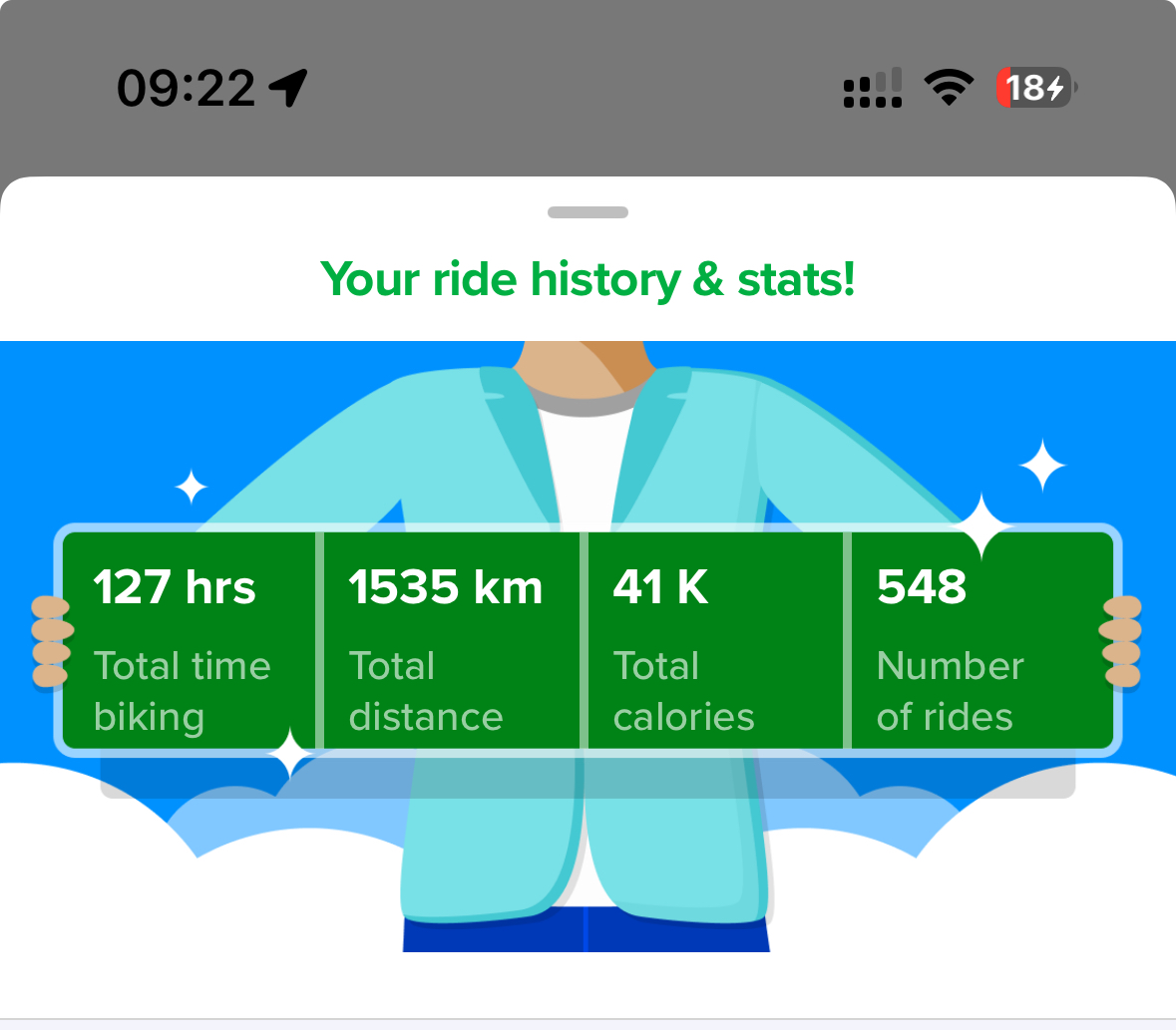
1. Get Ecobici (vs. getting your own bicycle)
Ecobici is Mexico City’s bikeshare system. An annual membership costs 566MXN pesos ($30.15USD at the time I was writing this), which is an absolute steal if you live anywhere central with access to the bike stations. Be sure to get an account asap with your credit card and email address.
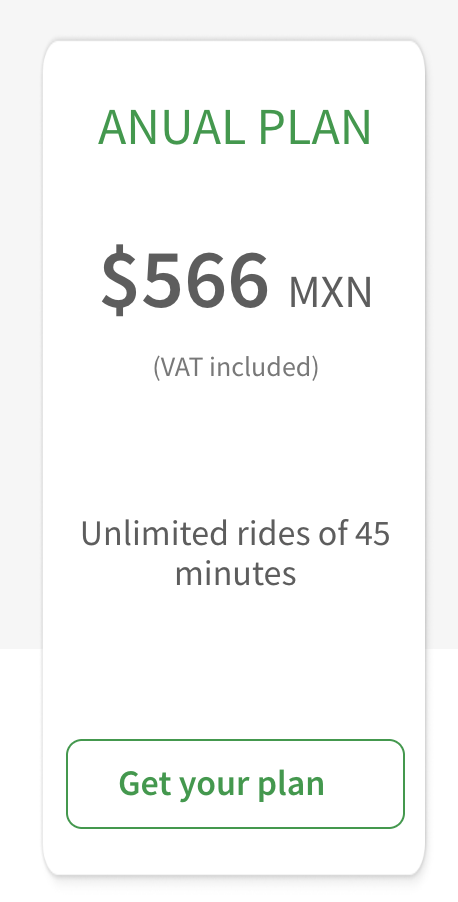
With the basic plan, which I have, you get unlimited 45-minute rides throughout the city every day. I’ve only ever gone over this 45-minute limit once or twice, but you can always redock your bike then start a new ride. Anywhere central you want to go should be covered.
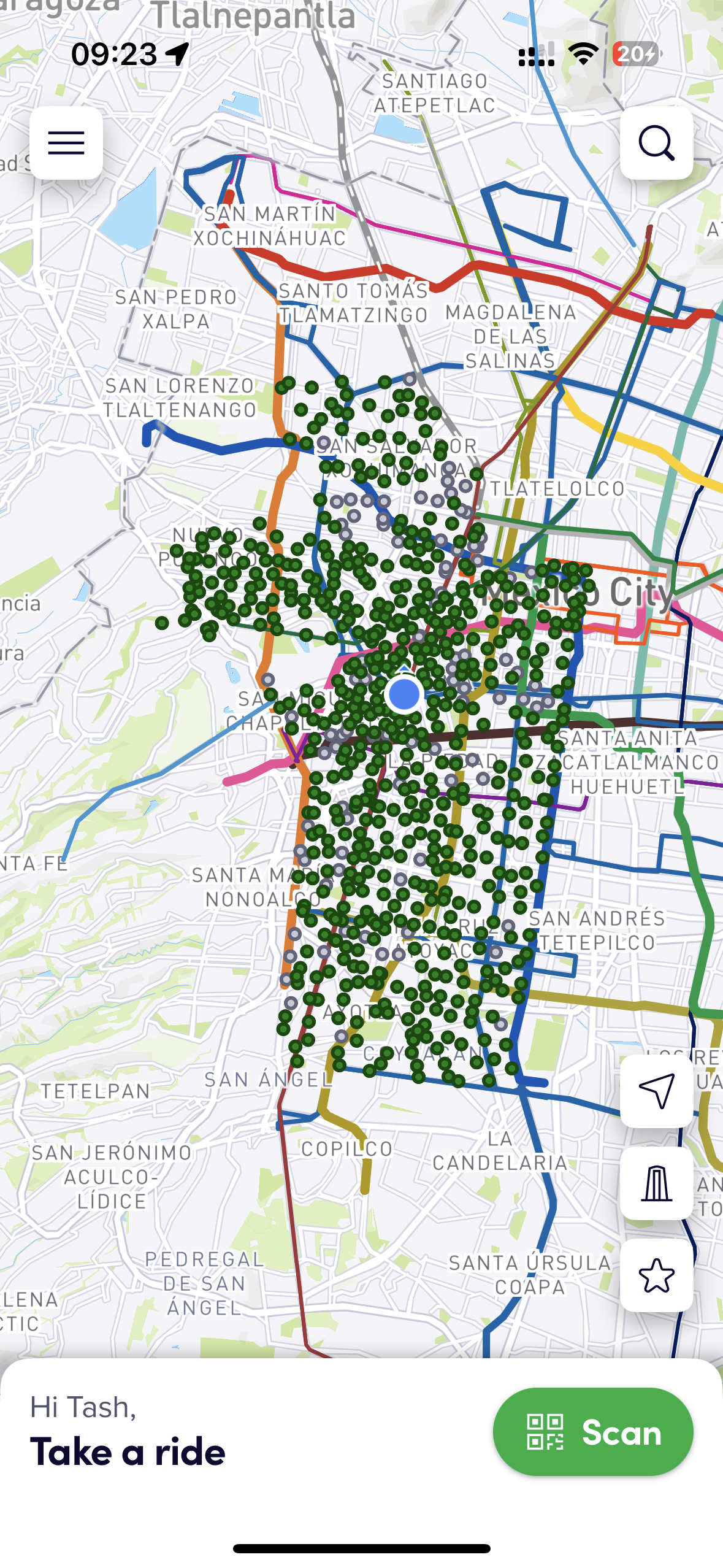

Ultimately, I recommend that anyone who is biking in Mexico City should have their own Ecobici membership. You should only get your own bicycle if you are going to be commuting regularly to an office where you know there is a safe locker. This is especially true if you are working in Polanco, where the traffic is terrible and all of the Ecobicis for miles and miles will be taken.
2. Attend Muevete Ciclovía on Sundays to practice
If you’re feeling nervous about hitting the main roads immediately, be sure to attend the Muevete Ciclovía that happens every Sunday in the city. It’s my favorite initiative, and it’s basically a giant bike path where major roads, like Paseo de La Reforma, go car-free and open to pedestrians, runners, roller skaters, and bikers. This happens every Sunday morning until 2 pm, and it’s so fun! You can rent an Ecobicis and try to get the lay of the land. I believe they open up the streets in Polanco on the first Sunday of the month, which is great if you want to explore there.
A bike ride in the Muevete is also a great way to see the sights, like the Angel of Independence, and even a quicker way than driving to Centro on the weekends. Or you can check out the Art Deco buildings around Condesa, or even visit Frida Kahlo’s House, as they’ve extended Ecobici to Coyoacán, and get some tacos or street food along the way. They also allow bikes in Chapultepec Park, which is obviously safer than attempting to bike on the road for the first time. For any kind of taco bike tour, they usually stick to pretty safe roads. When you’re biking, be sure to look out for the small, yellow plinths on the ground. These are your bike lanes! Muevete is a great time to start to get familiar with them.
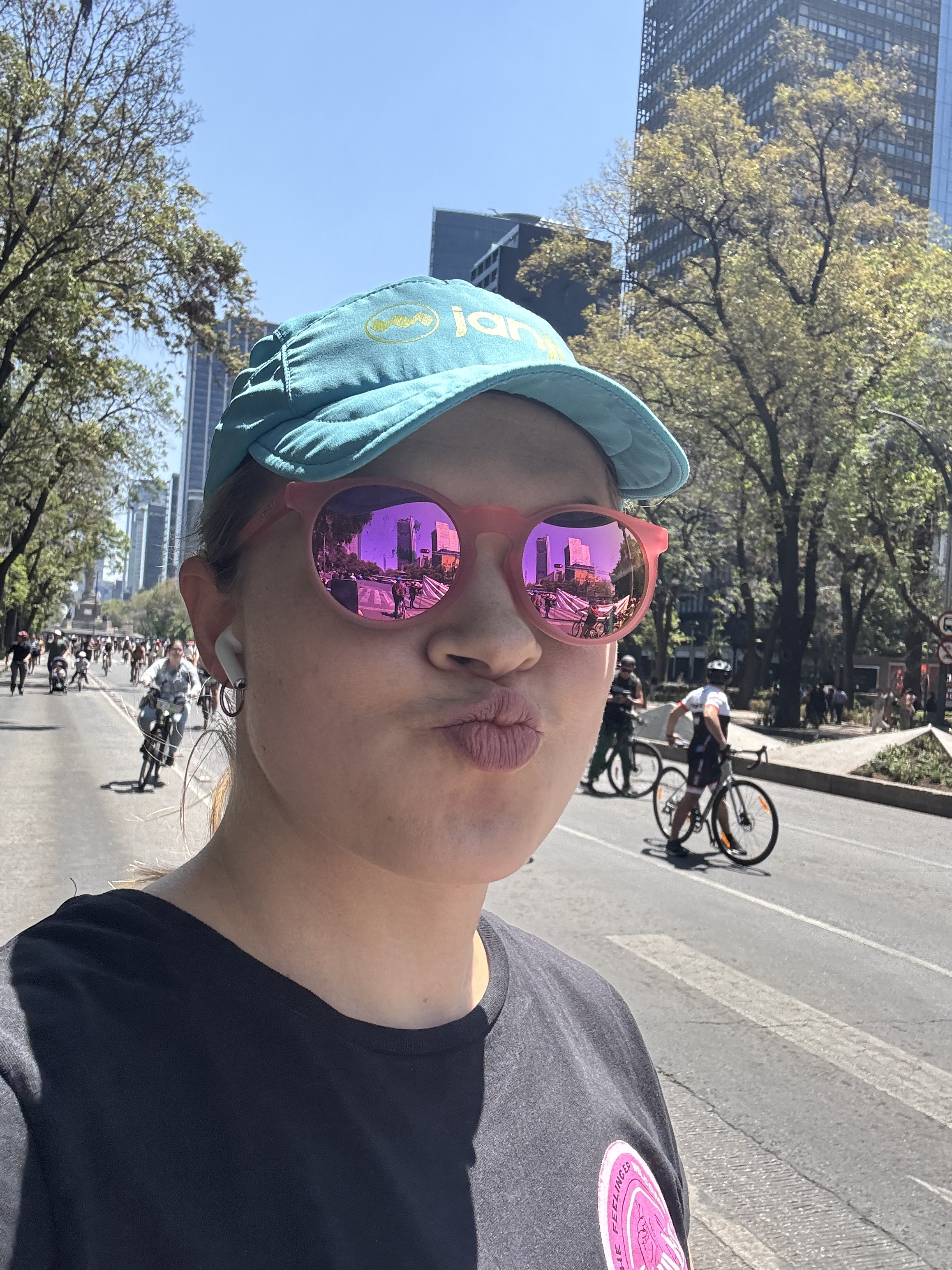
3. Relearn the rules of the road
I like to say that driving in Mexico City is “controlled chaos”: it can feel chaotic, but once you relearn the rules of the road, the chaos totally makes sense, and it’s strangely predictable.
Red lights are more like amber lights here. Vehicles run red lights all the time. As a pedestrian or a biker, you need to retrain yourself to wait for 3 seconds (one Mississippi, two Mississippi, three Mississippi) after your light turns green to let the dregs of the last direction of cars or motorcyclists sail through the intersection, despite their light being red. It is very important to stay safe, pause, and wait for all the remaining traffic to pass before you fling yourself out into the center of the road. If in doubt, pause and proceed with caution.
Mexican police cars are aggressive drivers in Mexico City, as are the public buses. Yes, it’s a topsy-turvy world we live in here: the vehicles on the road devoted to public service are often the ones who endanger other drivers, cyclists, and pedestrians the most. I found it particularly shocking when I moved here to see the public electric bus routes running the red lights.
The good news for you about the controlled chaos is that you will often not be the only person biking or moving something on the side of the road. Many locals bike or even drive their own movable carts of tamales, churros, ice cream, boxes of fresh meat straight from the market, you name it. So, in general, drivers will be alert to random carts and cyclists, but only if they can see you or hear you.
4. Be seen. Be heard.
If you’re biking, it’s time to draw as much attention to yourself as possible! This means wearing fluorescent gear and using your bell…a lot!
Surprisingly, fluorescent biking gear is rare in Mexico City. This means that if you wear anything fluorescent, it will help you stand out even more, which is what you want. I have a fluorescent yellow helmet and some adjustable fluorescent bands that I wear all the time. You can see some pictures here.
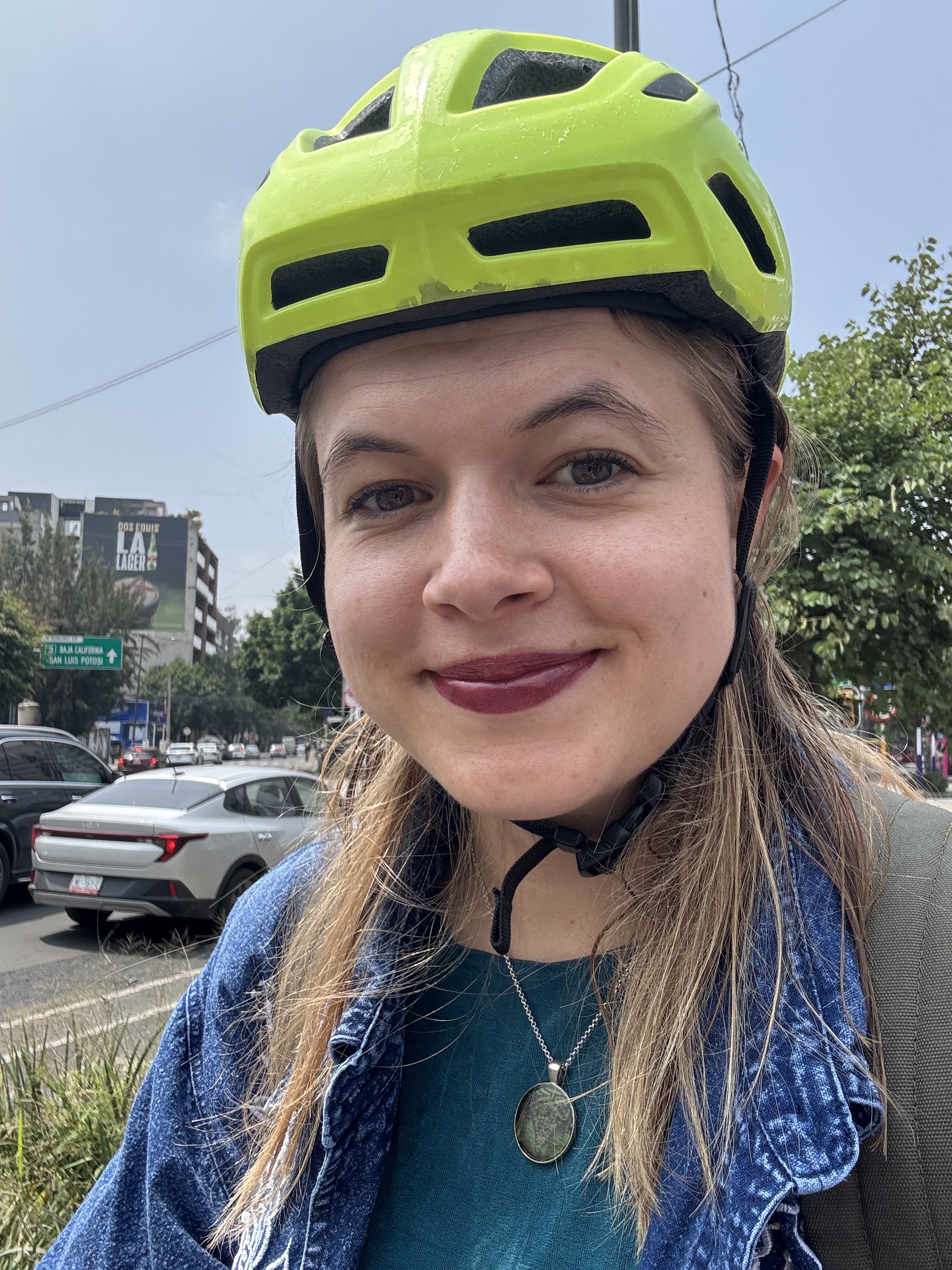
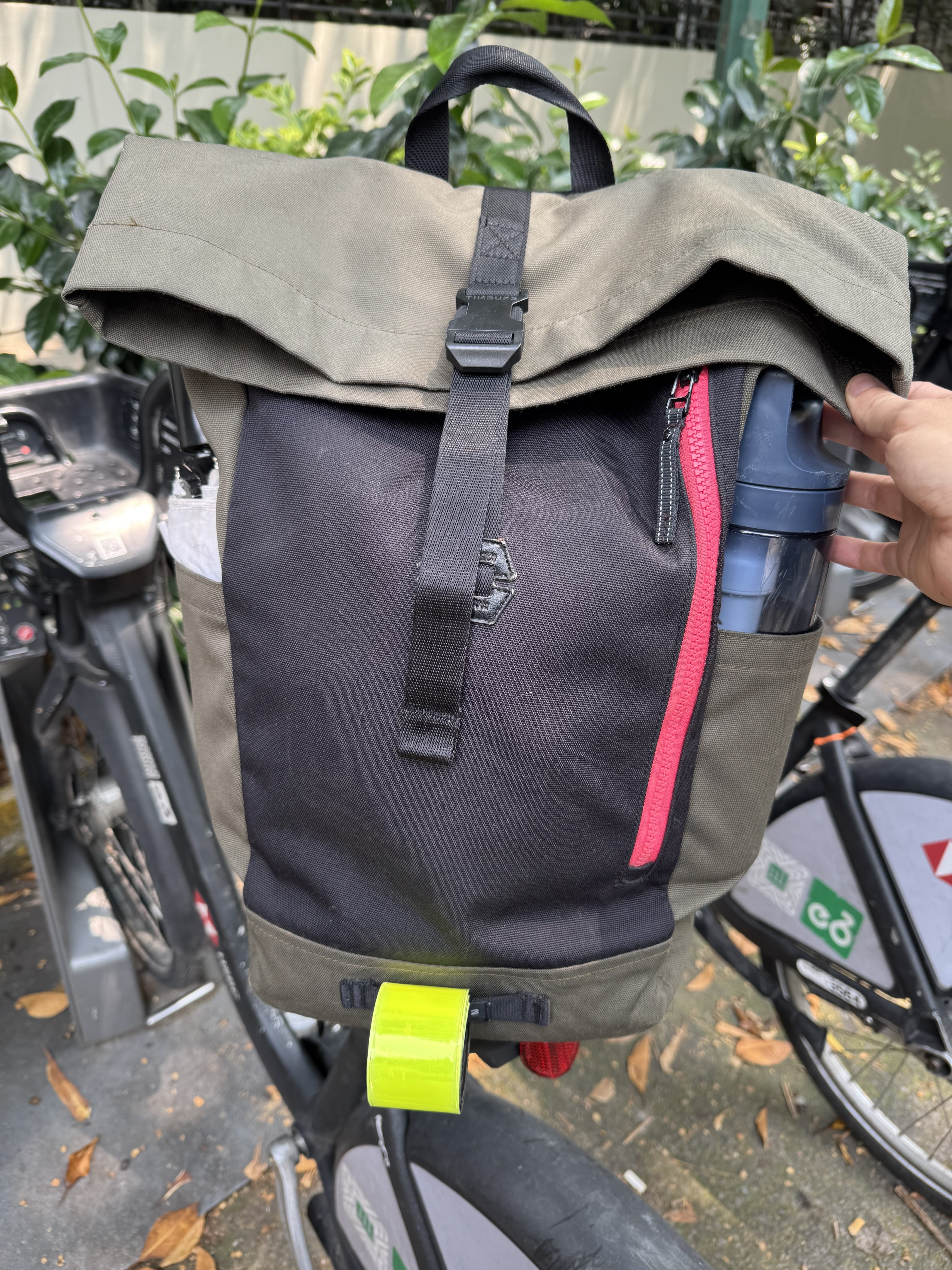
Use your bell! Unlike in road-rage New York or London, using your bell or horn in Mexico City is not rude at all. It is a way to alert drivers and motorcycles to your presence. I use my bell excessively.
5. Be humble. Be cautious.
Biking in Mexico City is not the time to have any kind of entitlement or ownership over right and wrong. While CDMX is an ancient city, cars rule the road, and the downside to having corrupt police is that you really have no rights or anyone to back you up with the rule of law. In Mexico City, people often settle issues like car accidents amongst themselves. So, trust me, you don’t want to cause any fights or argue with anyone, because you really have no idea who you could be dealing with.
Sure, it can be frustrating to have a driver cut you off in CDMX. But if you have this attitude, you’ll be exhausted pretty soon. I always assume that if a driver comes too close to me while I’m biking, it’s because I didn’t alert them enough to my presence. Of course, there are the occasional asshole drivers. But with those people, especially, stop and think to yourself: Do I really need to aggravate this person? Do I really want to mess with them and have to argue in Spanish? The answer is no. If you do get cut off when biking, just slow down, go around them, and be grateful that they were driving at 15 MPH instead of 50: otherwise, you’d definitely be squished.
Be deferential to cars as much as possible if you want to live. Many cars whizz around corners without checking the bike lane. The car is much bigger, faster, and stronger than you, and you have a lot to lose, so always let the whizzing cars go first. Caution and humbleness on your end is the way.
6. Stick to the bike lanes where possible
The bike lanes in Mexico City are pretty great. They’ve managed to draw the line using giant yellow bricks, which definitely deters drivers from hitting them or going into the bike lane. This was definitely the problem when there were nothing but flimsy bike lane lines in San Francisco. You can get around most of the city with a good bike lane or a pedestrian walkway.
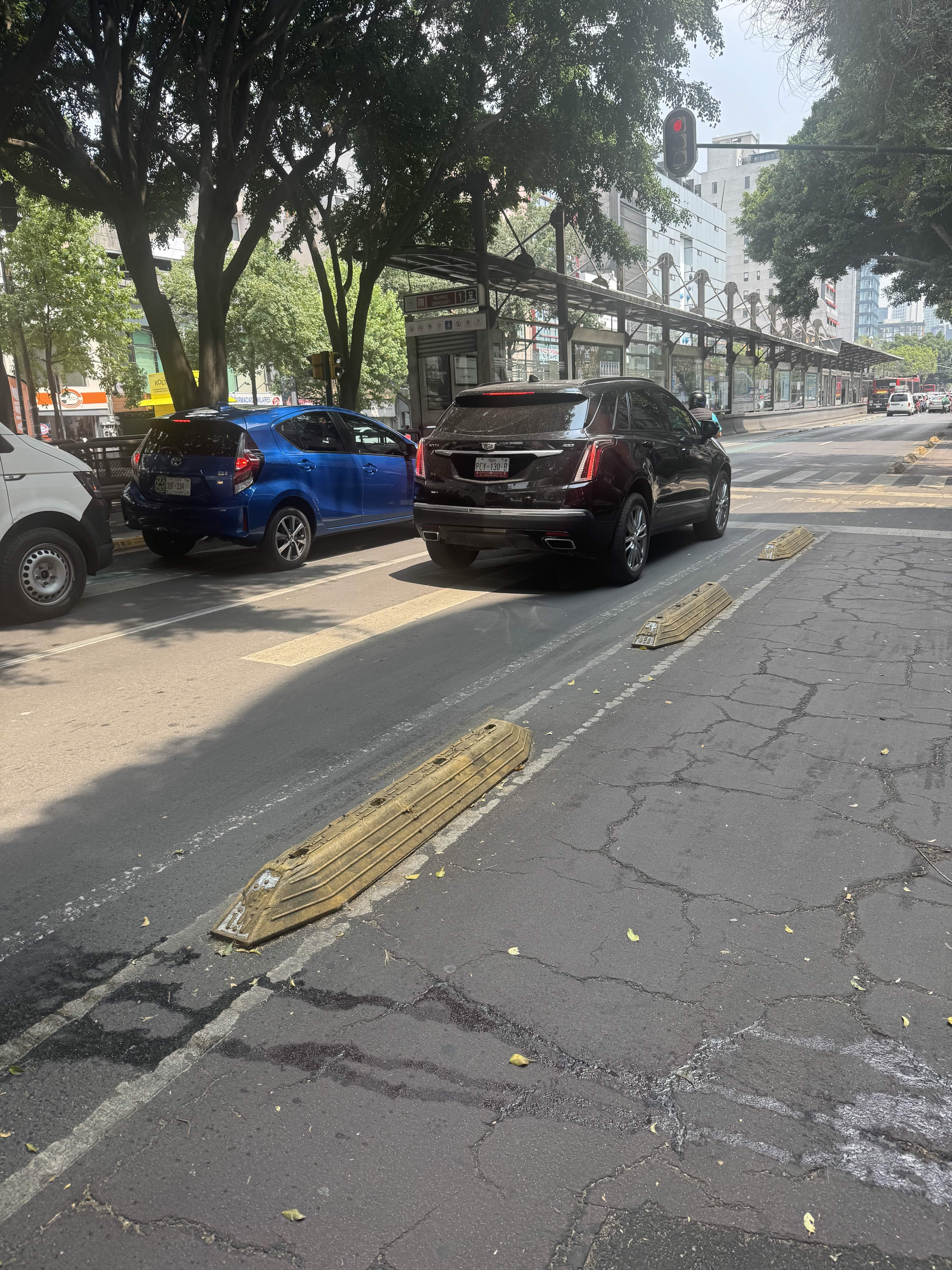
7. Stick to bike lanes, and check air quality
Make sure you download the IQ Air App to check the levels of air pollution aren't too high while you are biking. I usually don’t bike if it’s over 100 (red), but anywhere between 0 and 99 (green or yellow) is fine.
So, there you have it! That’s everything you need to know about how to bike safely and enjoyably in Mexico City. I hope you found my tips helpful and informative. Have fun, and let me know how your biking in CDMX goes! Good luck!

